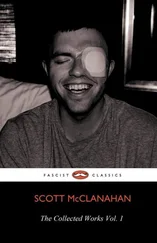Likewise, in industry at that time, the purveyors of deadly chemicals sought to employ their manufactured poisons in every conceivable way, particularly as pesticides that would eradicate insects and rodents that destroyed crops and spread disease. Adverse consequences for human beings or the ecosystem were never seen as a problem.
The particular lethal gases selected for executions in the twentieth century were originally billed as “humane” agents that would kill very quickly without causing the person being killed pain and suffering, and thus would finally spare the executioners and witnesses as well—something that had not previously been achieved by any other method of execution. That cyanide was already used to extract gold, toughen steel, and exterminate pests—vermin and insects that were subhuman and contrary to the interests of man—further enhanced its penal appeal. This was not only because the poison supposedly killed quickly and painlessly, but also because it put condemned humans in the same category as bothersome insects and rats, for which polite society was not bound to feel any sympathy, and because it conjured up images of producing pure gold or manufacturing the strongest steel. And yet, from the time of its earliest use, experience showed that cyanide was not nearly as quick, painless, or humane as was originally claimed; it also polluted the environment and poisoned the body politic. But states would nevertheless continue to use it, and the Nazis embraced it as an optimal tool for genocide.
The gas chamber, then, represented a great social laboratory in which one could control and study the mechanisms of death and dying, possibly leading to new discoveries that would remove the element of painful suffering and maybe even enable scientists to find the key to life itself. In short, gassing provided a gateway into all sorts of areas that had nothing to do with responding to crime.
• • •
Postmodern philosophers and social theorists have injected more penetrating insight into the philosophical discussion about criminal punishment. In the 1970s Michel Foucault’s critique of the ways in which new modes of criminal punishment became rationalized as technologies of power within modernity began to offer a way to analyze changing historical definitions of the “proper” relationship between the individual and the state. In Discipline and Punish (1977) Foucault examined the birth of the prison from the perspective of the body as social subject, arguing that the move from corporal punishment to imprisonment that occurred after the Enlightenment reflected an important change by which the direct infliction of pain was replaced by an increased spiritualization of punishment. Foucault characterized the “disappearance of torture as a public spectacle” and the “elimination of pain” (a “gentle way in punishment”) as specific features of post-Enlightenment modernity and governmentality, features that were subsumed in new discursive regimes of criminality, science, and the self.
Although Foucault didn’t mention lethal gas per se, many of these discourses formed the underpinning for twentieth-century visions of the lethal chamber. Who were its designated “beneficiaries” of humane punishment? They were the criminal and defective classes, whose lives were not worth living, whose elimination would preserve the health of the social body, and whose deaths could conceivably be carried out without pain or suffering through medical regulation and scientific execution. Some executioners rationalized their use of lethal gas as the agent of needed “cleansing” and “euthanasia”—not as a form of retributive execution.
As if building on Franz Kafka’s great short story “In the Penal Colony,” Foucault immersed himself in what David Garland has described as “the minutiae of penal practice and the intricacies of institutional life in a way which recalls—and goes beyond—the classic [sociological] studies of prison life offered by [Donald] Clemmer, [Gresham] Sykes and [Erving] Goffman.” 18In doing so, Foucault raised, among other things, an important issue for the study of capital punishment: that modern legal executions of prisoners are carried out in prisons, not in the public square. Foucault’s close attention to the environmental aspects of the formalized killing process and the meticulous regulatory practices whereby modern criminal subjects are created has opened important new pathways for thought. His analysis not only captures the essence of the modern penal apparatus. It also indicates why the notion of capital punishment as a “commonsense” solution for crime is inherently flawed.
Foucault introduced into the discussion more attention to the essential notion of resistance. Prior to Foucault, most discussions of penal systems and capital punishment completely left out any consideration of resistance. In doing so, they denied agency on the part of prisoners and their supporters and even their executioners. Foucault’s understanding of the intrinsic link between power and resistance was complex and evolving. He famously said, “Where there is power, there is resistance, and yet, or rather consequently, this resistance is never in a position of exteriority in relation to power.” 19Simply put, he did not ascribe much agency to modern subjects, and many philosophers have taken him to task on this score.
In this history of the rise and fall of the American gas chamber, on the other hand, acts of resistance are an integral part of the story. What Bryan G. Garth and Austin Sarat in another context have called “the tactics of resistance of disempowered persons” can be seen as taking many forms, including on the prisoners’ part such actions as work stoppages, hunger strikes, attempted escapes and revolts, volunteering to take the place of another condemned person, issuing impassioned speeches and writings, making defiant gestures, and mounting protracted legal appeals, to name a few. Resistance on the part of their allies and advocates is also described. Some of these actions include picketing the prison and governor’s mansion, waging constant legal battles through the courts and legislatures, and organizing movements against capital punishment. Some types of resistance occurred from the beginning; others appear to have increased over time, until finally states were compelled to abandon their use of the gas chamber.
Resistance to the gas chamber ultimately unmasked hegemonic notions of state-sponsored killing as being naturally just and humane, and finally destroyed its legitimacy as a method of execution. But the fall of the gas chamber went beyond that. In the end the resistance not only destroyed the moral legitimacy of the gas chamber; it also challenged the fundamental legitimacy of capital punishment itself.
This rise and fall of the gas chamber is problematic and incomplete because the defenders of capital punishment substituted another “rational” technique—lethal injection—in place of the discredited methods, and this replacement method of the poison needle is similarly shrouded in the trappings of bureaucratic management and medical ceremonialization. Lethal injection is hideous in its own right, but it is not a practical tool for mass murder. Unlike gassing, it is too unwieldy and individualized for carrying out genocide.
Social theories have their strengths and weaknesses. One might say, for example, that Rusche and Kirchheimer’s orthodox Marxist approach overestimates the importance of economic forces in shaping penal practice and underestimates the influence of political and ideological factors, giving little attention to the symbols and social messages conveyed. 20Foucault’s work is less a history of the birth of the prison than it is a structural analysis of the state’s power to discipline and punish, and he devotes considerable attention to knowledge and the body while ignoring other angles of interpretation. Instead of underestimating the role of politics in punishment, Foucault goes so far as to define punishment as “a political technology” and “a political tactic.” 21
Читать дальше












